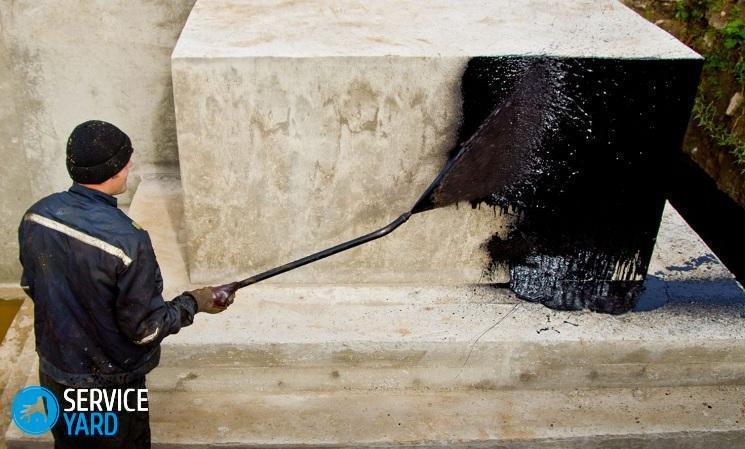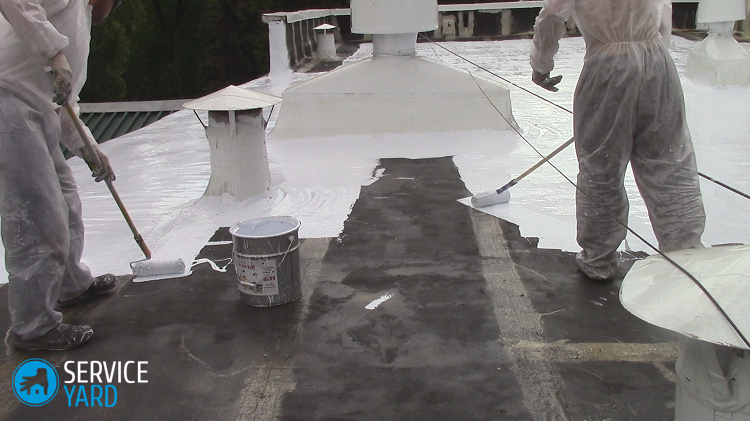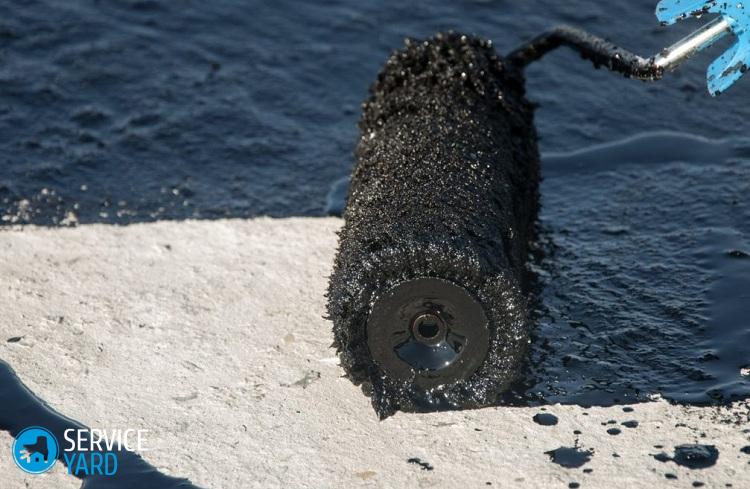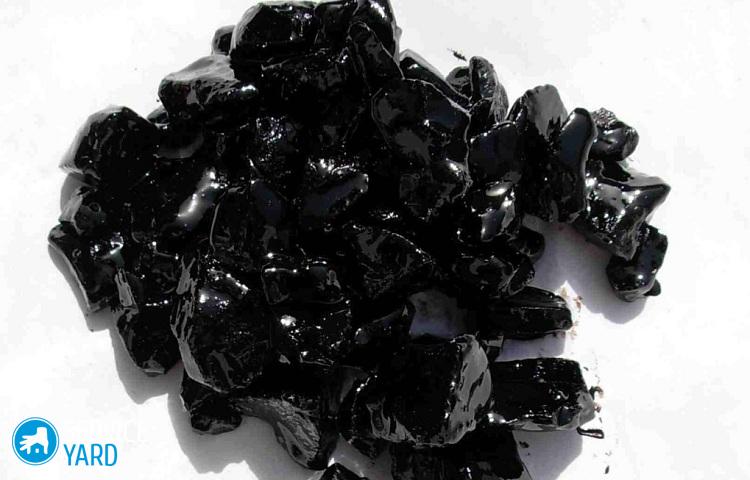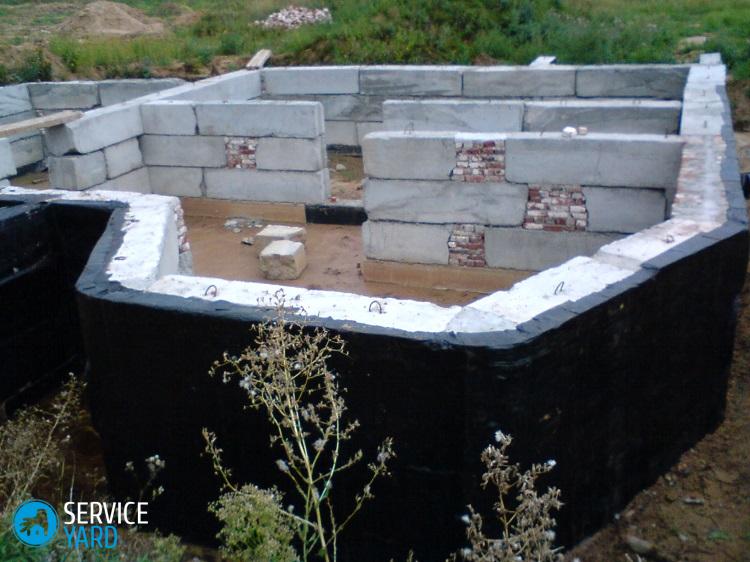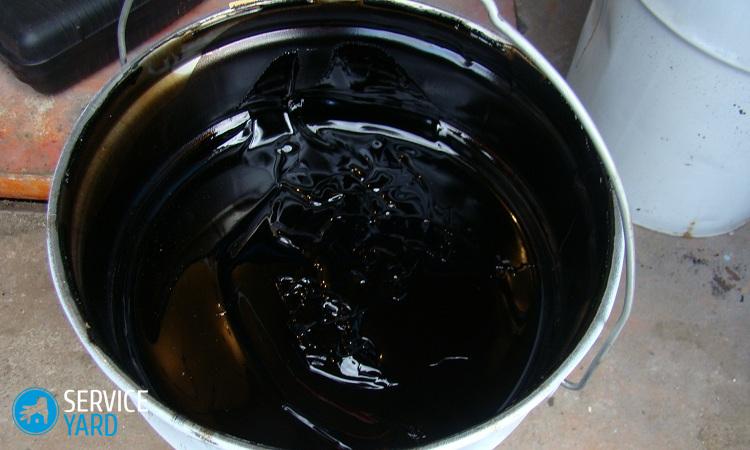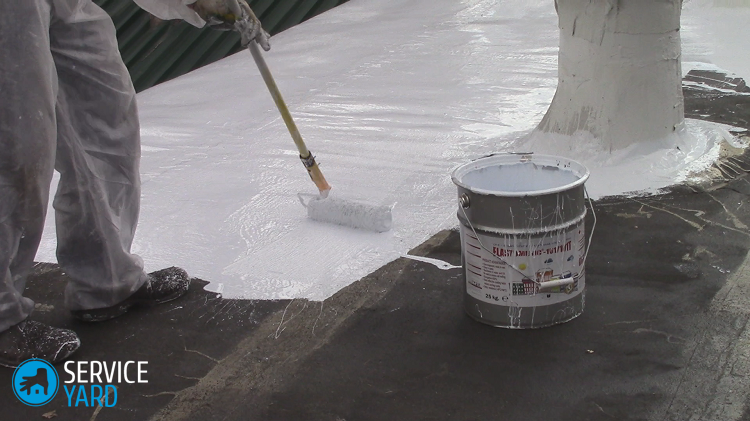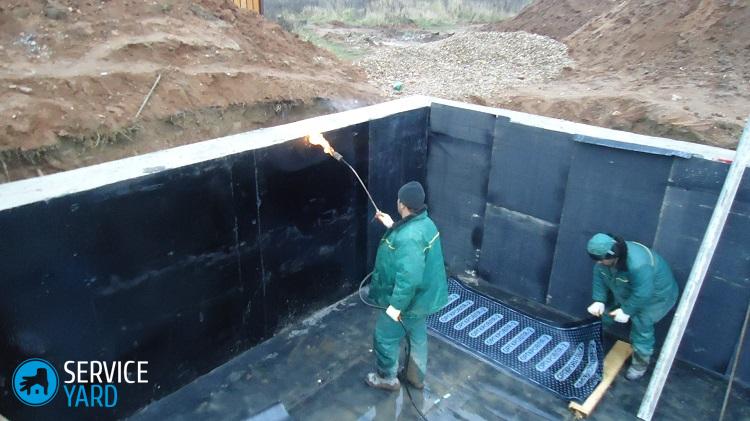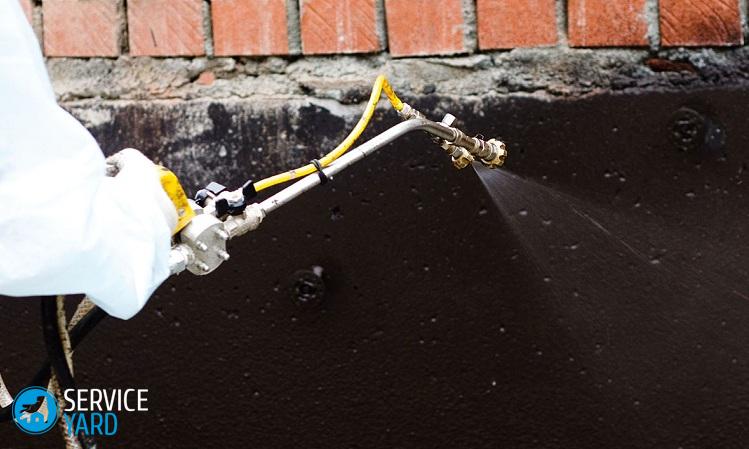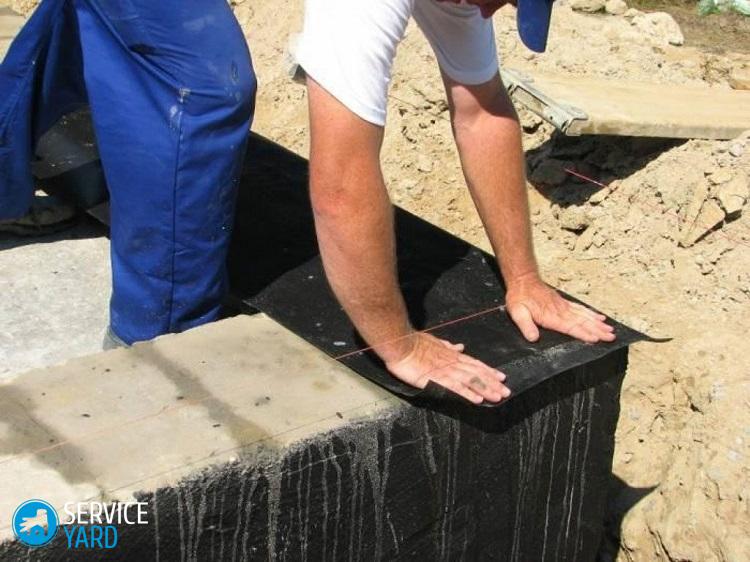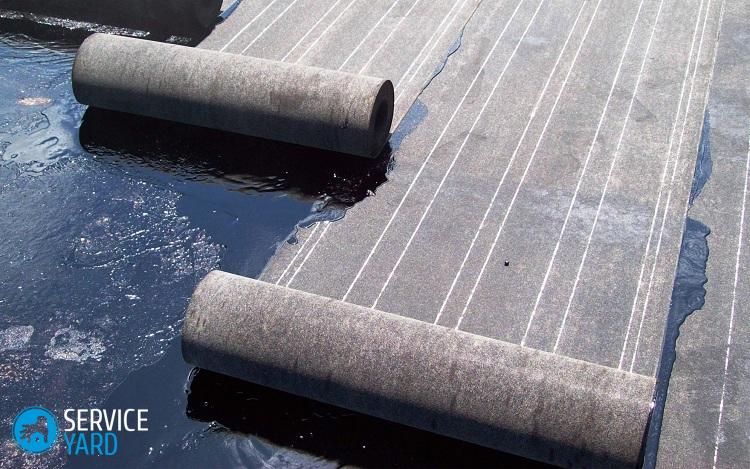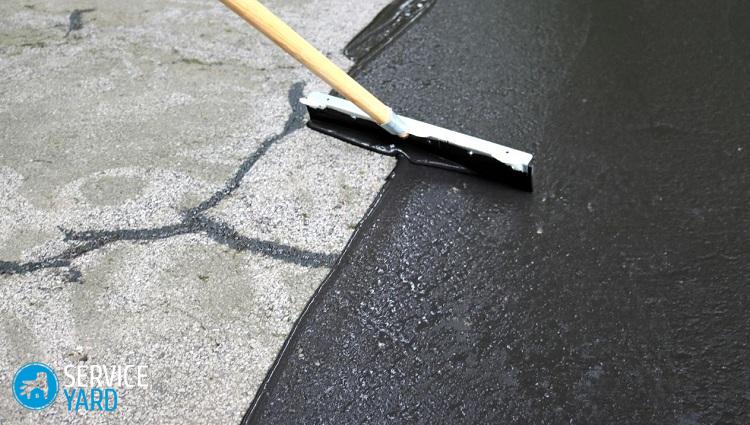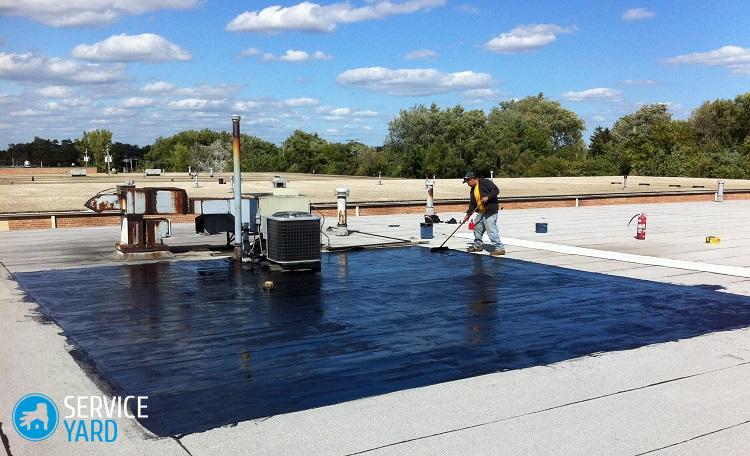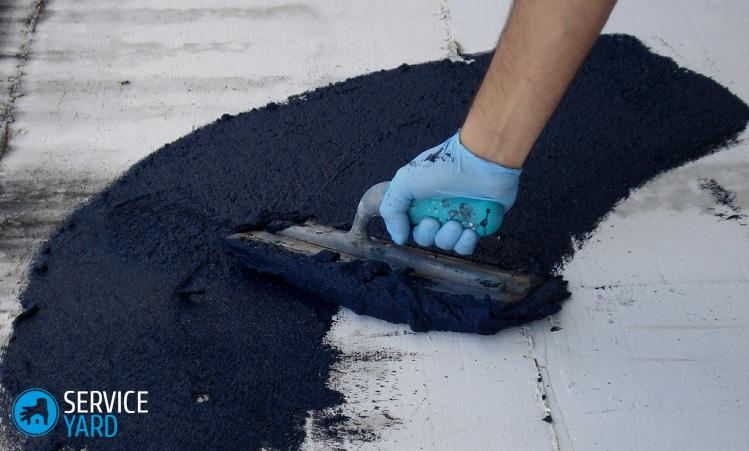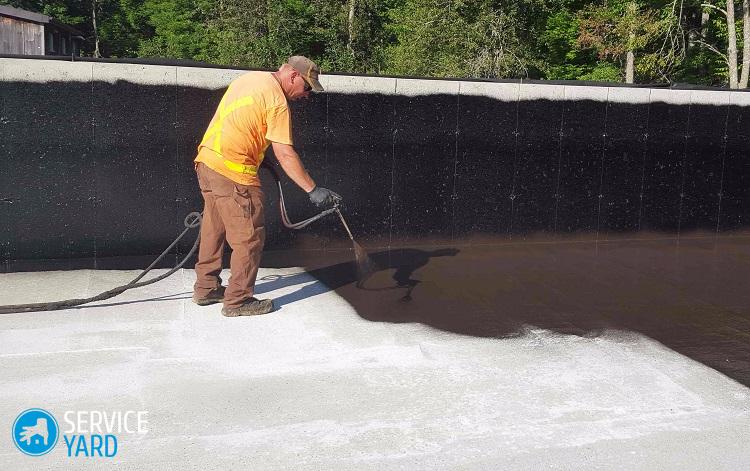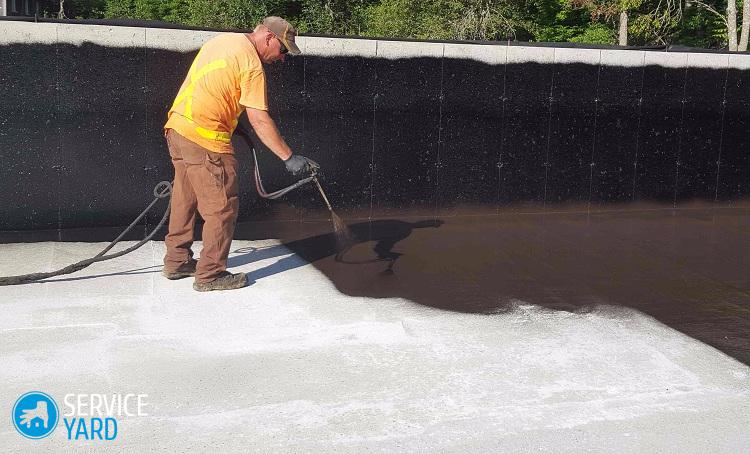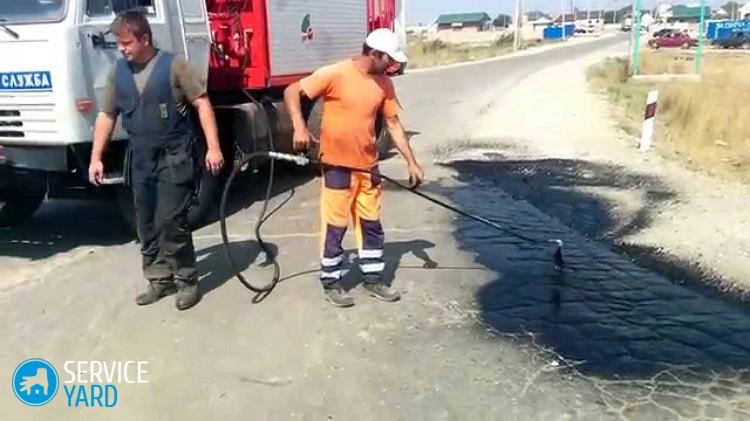Bituminous mastic for waterproofing

There are many diverse designs and styles in the construction world, innovative solutions and inventions of high-performance materials. This is what makes a modern house safe, environmentally friendly and with a long service life. The main problem that developers have to solve is the impact of external factors on the building. The most pressing issue is protection against the damaging effects of moisture and the waterproofing of buildings. High humidity, climatic phenomena, groundwater can have a negative effect on almost all building materials, including metal reinforcement. As a result of the absorption of moisture by concrete, its integrity is destroyed, which leads to the development of fungus, mold, which can harm human health. But the most negative consequences can be from contact of moisture with metal structures - corrosive processes that occur as a result of liquid getting on the metal can destroy the integrity of the entire structure. The leader among all means of protecting buildings from moisture is bitumen mastic for waterproofing, which will be discussed in this article.
to contents ↑Advantages and disadvantages of bitumen mastic
All types of insulation have their own operational and physico-technical characteristics, application features, pros and cons. When choosing the right material, it is imperative to consider all these data. Consider the advantages and disadvantages of using bitumen mastic for waterproofing in more detail.
Advantages:
- The high elasticity of the mastic promotes excellent adhesion between it and the surface of the processed material. Due to this, the building structure is reliably protected from contact with moisture and erosion resulting from such contact.
- Prevention of occurrence and development of the process of corrosion of metal structural elements, which allows to extend the life of the unit.
- Penetration of mastic into pores and filling of cracks.
- Protection against the appearance and development of pathogenic microflora - mold, fungi.
- Due to its elasticity, with a long life of the building and with its shrinkage, the waterproofing layer remains intact.
- The speed and ease of application of this coating makes it possible to carry out waterproofing work independently. These works do not require special skills, the main thing is not to leave unprocessed even small gaps in the surface.
- The ability to replace the adhesive composition with bituminous mastic when installing waterproofing material in rolls.
- The correct selection of mastic for waterproofing will allow you to work with it at almost any temperature.
- Affordable cost and economical use.
Disadvantages:
- The process of solidification of bitumen mastic for waterproofing takes a long time. In this regard, it is necessary to postpone subsequent processes for a certain period of time.
Important! This is not a big drawback, since a well-designed work plan will allow us to take up other processes at this time.
- Mastics of poor quality may dry out and crack over time. You should carefully choose a waterproofing material, starting from absolutely not its cost.
Varieties of mastics for waterproofing
There are many criteria according to which mastics can be divided into types. When buying material, carefully read the instructions, which indicate the technology of use and information about its composition. Let us consider in more detail by what criteria it is possible to divide bituminous mastics for waterproofing.
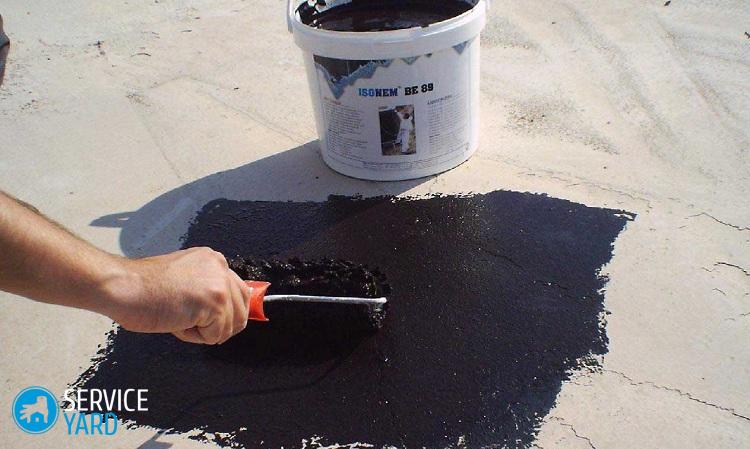
Application technology
The main varieties of mastic according to the application technology are hot and cold.
Hot
There are many brands of such mastics in the trading network, the main condition for using them is the mandatory heating to a certain temperature. This liquid mastic for waterproofing varies in heat resistance - there is a maximum temperature to which the composition must be brought up so that it can be used as an independent waterproofing or as an adhesive for rolled material.
Important! Manufacturers do not recommend mixing mastics with different characteristics.
Hot formulations are mainly used by professional builders. When working with such material, it is required to strictly observe a certain process technology and safety regulations in order to avoid injuries. In the absence of experience with hot mastics, consult a specialist or use cold bituminous mastic for waterproofing.
Important! This type of coating material is mainly used in regions with severe winters.

Cold
Waterproofing compositions of cold application can also be found in various brands. Before use, the material does not require special preliminary preparation, you only need to mix thoroughly.
Important! When working in cold weather, some types of mastics need to be heated to certain temperatures. For such work, you should choose only high-quality materials that are produced by trusted companies.
Solvent
To bring the mastic to a more liquid consistency, you should use only the solvent on the basis of which it is produced - it can be organic solvents or water.
Number of components
On sale you can find mastics of two types - one-component and two-component.
One component
To use this type of waterproofing, you just need to mix the composition thoroughly and apply it to the wall surface prepared for processing.
Two-component
Before using such waterproofing, it is necessary to connect two components in certain proportions. The composition should be prepared immediately before use, as it quickly hardens. In this regard, and you need to work with him quickly. The two-component mixture in the closed state has a longer shelf life and high strength during operation.
Important! The high cost and complexity of use does not contribute to the widespread use of such a composition.
Hardening
According to the state of solidification, those which remain in a semi-solid state or completely harden are distinguished.
The composition of the components
Depending on the components included in the mastic, you can find a diverse number of mixtures, we will consider them in more detail.
Bituminous and mineral mastic
As part of such a bituminous mastic for waterproofing, you can find cement, asbestos, limestone, chalk, dolomite or quartz, crushed into fine powder. The mass of these components is not more than 20% of the total mass of the composition. Also, plasticizer in an amount of at least 5% is included in such mastic.
The plasticizer in cold mastics is lacoyle or an oil solvent. It does not harden in air, can withstand various hydraulic, vibration and mechanical loads without damage.
Important! This mastic is better to use for waterproofing parts of the foundation in the recess.
Bitumen-rubber mastic
Fine synthetic rubber or rubber powder, which is part of such a rubber compound for waterproofing, in combination with petroleum bitumen makes mastic more elastic.Plasticizer is a special mineral oil and mineral fillers. The composition is made on the basis of an organic solvent.
Dry (in powder form) bitumen-rubber mastics found on sale. Before use, they need to be poured into a container, put on fire and heated to the temperature indicated on the package. The consumption of such mastic, depending on the thickness of the layer, is 1.5-2 kg per square meter.
Important! This mastic is one of the most affordable, the service life of the coating is 15-20 years.
Bitumen-rubber mastic
A reliable, dense and elastic protective coating against moisture will provide a bituminous mixture for waterproofing with rubber, which has a good viscosity. Like the previous view, it is diluted with a solvent if necessary. Each layer dries from 6 to 12 hours. Depending on the thickness of the applied layer, porosity of the substrate, temperature and humidity of the environment, the flow rate is 0.75-1.5 liters per square meter. To form a high-quality coating and better adhesion to the work surface, it is recommended to moisten the structure a little.
Important! When working with rubber mastic, the treatment of the base with a primer is not required.
Bitumen-polymer mastic
Aqueous emulsion bitumen-polymer mastic for waterproofing contains one or more modified polymers. Polymer compositions perfectly protect building structures from moisture, and are also good protection of rooms from the penetration of radon from the soil. Drying time - 6-8 hours.
Important! The absence of harsh odors in the composition of organic solvents, as a result, allows this mixture to be used not only for external wall treatment, but also for internal work.
Bitumen-latex mastic
Like the previous view, this is a water-based composition. Synthesized in industry rubber - latex, has improved characteristics. On sale there are one-component compositions that are used in cold form. They can be used in frosty weather without heating.
Preparation of surfaces for applying a waterproofing layer consists in processing them with a primer. To do this, it is enough to dilute the mastic in water in a ratio of 1: 1.
Bituminous oil mastic
Frost-resistant mixture, ideal for processing any materials. Such waterproofing can be carried out inside and outside the recessed structures.
The mixture should be diluted with white spirit, gasoline or solvent. Consumption of the composition is from 1 to 1.5 liters per square meter.
Bitumen primer
This mixture has a more liquid consistency and is intended to prepare the treated surfaces for applying the main layer of mastic. It is prepared by diluting, depending on the basis, to the desired consistency with water or a solvent.
It can be applied to the surface with a brush, roller or from a special spray gun. After application, you need to let it dry for 1-5 hours, depending on the basis.
to contents ↑Requirements for waterproofing mastics
A durable and durable coating can be obtained if the purchased mixture meets the following requirements:
- Examine the label, paying attention to the production date and all the necessary specifications.
- Uniformity and absence of extraneous inclusions. They can create air bubbles and weaken the material's properties in protection against moisture.
- The composition should be convenient for application and elastic.
- The absence of toxic components in the composition that can emit substances harmful to humans.
- The heat resistance of the composition for waterproofing the foundation should be at least 70 degrees.
- For good bonding of rolled sheets or adhesion to the base, the mixture must have high adhesion.
- Any bituminous mastic for waterproofing should be completely waterproof.
- The waterproofing layer after hardening must constantly maintain its physical and mechanical characteristics throughout the entire period of operation. Pay attention to the operating temperatures indicated by the manufacturer.
Basic techniques for applying waterproofing
It is not difficult to create a protective waterproofing layer, but this process takes a lot of time.
First step
Before starting work, carefully inspect the surface for cracks, and if there are any, they must be repaired:
- Defects of the foundation, if necessary, are tightened with metal ties, which consist of reinforcing strips 3-5 mm thick or brackets with a diameter of 10-12 mm.
Important! This procedure is mandatory, because if this is not done, moisture will destroy concrete, getting deeper into the wall, waterproofing will be useless.
- First of all, cracks and depressions need to be expanded as much as possible. Small cracks are first filled with a deep penetration primer, and then filled with sealant, which is intended for outdoor use.
- To close a large crack, first you need to fix the tightening elements, treat with a primer, and then fill it with a full adhesive-cement or concrete mortar over the entire width and depth.
- It is recommended to reinforce the brick foundation first with a metal mesh, apply plaster, and only then proceed with insulation work. Such treatment should be carried out on the entire surface of the foundation.
Second phase
The next step is the priming of the walls with a bitumen primer. The primer consists of a solvent and bituminous mastic for waterproofing. This mixture can be bought ready-made or you can mix these two components on your own in a 1: 1 ratio.
Important! This process is necessary to strengthen the surface and to bind dust residues on the wall surface, which creates a good basis for applying the main layer of waterproofing.
The primer fills small cracks and pores, creates a smooth waterproof surface, eliminates excessive absorption of the processed material, and as a result reduces the consumption of the main composition.
Features of work:
- The primer (primer) is conveniently applied with a brush or brush, as it has a liquid consistency.
- For the convenience of work, the tool can be mounted on a long handle.
- Apply a primer evenly on the treated surface and leave to dry for 3-12 hours.
Third stage
After the primer dries, apply a layer of the selected bitumen mastic for waterproofing. You can apply several layers.
Important! Four layers of waterproofing, alternating with fiberglass, protect the walls from any moisture, and are also an additional surface reinforcement. Such waterproofing is called heavy.
Using a trowel or a wide spatula, apply waterproofing to the surface and evenly distribute on the wall.
Important! Each layer of the applied material should dry well, be sure to pay attention to the packaging, which indicates the time necessary for this.
Other nuances:
- You can use bitumen mastic for waterproofing for gluing roofing felt. To do this, after applying the primer, a layer of mastic is applied. For better adhesion, it is recommended to warm up the mastic layer before gluing the roofing felt webs.
- Cover the dried, treated foundation walls with thermally insulating material before further construction work. This material will protect the waterproofing coating from damage.
Work with bituminous mastic in the winter
When carrying out work in the winter, when the ambient temperature is up to 30 degrees below zero, use bitumen-nairite mastic. The successful implementation of waterproofing will be facilitated by the following recommendations:
- If it is not intended to use roofing material in the work and the mastic acts as the main material for isolation from moisture, the treated wall surface should be warmed up to plus temperature. To do this, you can use heat guns or gas burners.
- Preparation of mastic for use should occur in a warm room located at a short distance from the work.
- During fog, snowfall, rain and high humidity it is impossible to carry out waterproofing work.
- In cases where there is a great need to carry out waterproofing in the winter season, it is recommended to equip special structures - greenhouses. This is a construction made of metal or timber, which is erected at the place of work and tightened with plastic wrap. Inside such a building, heating appliances are turned on. With the help of greenhouses, you can achieve heating the foundation to a positive temperature. In the process of heating waterproofing mixtures, it is necessary to use electrically heated mixers.
Important! Do not use open flames to avoid creating hazardous conditions for the life and health of workers.
In winter, the waterproofing process is a little different. In the place where the teapot is installed, all layers of mastic are applied, then the teapot is transferred further and already in the next section all the waterproofing works are carried out. Such processes are called work grips.
to contents ↑Important! When the warm season arrives, the results of winter work should be checked. All identified defects must be rectified immediately.
Stock footage
The basic information you need to know about working with bitumen mastic for waterproofing, you have. Adhering to our recommendations, the work will not cause much trouble.
- How to choose a vacuum cleaner taking into account the characteristics of the house and coatings?
- What to look for when choosing a water delivery
- How to quickly create comfort at home - tips for housewives
- How to choose the perfect TV - useful tips
- What to look for when choosing blinds
- What should be running shoes?
- What useful things can you buy in a hardware store
- Iphone 11 pro max review
- Than iPhone is better than Android smartphones



